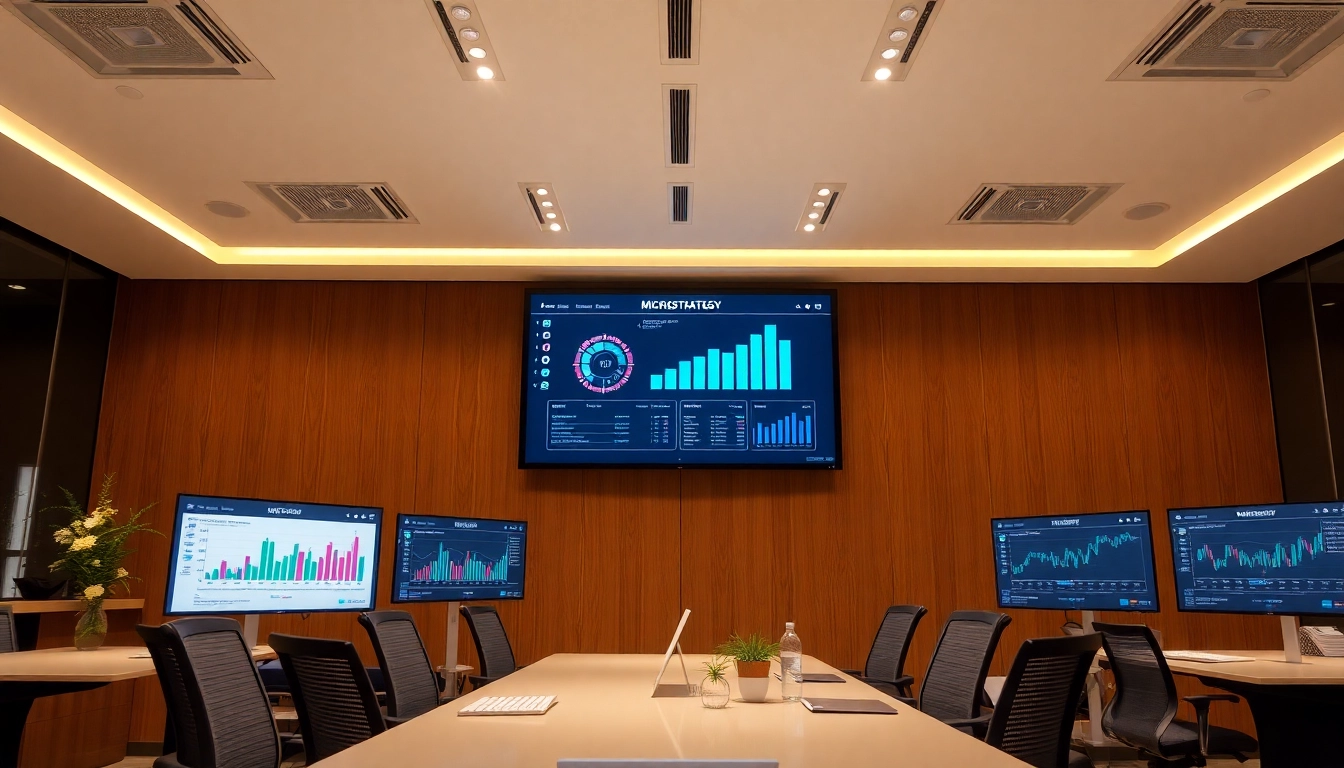Unlocking Market Potential: An In-Depth Guide to Trading View
In the modern era of trading and investing, having access to comprehensive, real-time data and analytical tools is essential for making informed decisions. Among the myriad platforms available, trading view has emerged as a leading solution, offering both novice and professional traders a robust environment for charting, analysis, and community engagement. This guide delves into the multifaceted features of Trading View, exploring how it serves as an indispensable tool for trading success across various markets.
Introduction to Trading View: Features and Benefits
What is Trading View and how does it serve traders?
Trading View is a comprehensive online platform designed to facilitate market analysis through advanced charting tools and social features. It acts as a supercharged marketplace where traders and investors can track, analyze, and discuss a wide array of financial instruments—including stocks, cryptocurrencies, forex, commodities, and indices. The platform’s user-friendly interface coupled with powerful analytical capabilities makes it suitable for traders at all skill levels, from beginners to seasoned professionals.
Its primary appeal lies in combining real-time market data with a social network of traders, enabling users to share ideas, strategies, and insights. With global market coverage and accessible from virtually any device, Trading View empowers traders to stay ahead in fast-moving markets, enhancing their decision-making processes.
Furthermore, Trading View’s versatility is exemplified through its ability to integrate with brokerage accounts, automate strategies, and customize visualizations—making it not just a charting tool but a full-fledged trading ecosystem.
Key Tools and Functionalities for Beginner to Advanced Traders
Fundamental and Technical Tools
Trading View offers an extensive collection of tools that cater to diverse trading strategies. Beginners benefit from intuitive charting interfaces, pre-set indicators, and educational resources that facilitate initial learning curves. Advanced traders, on the other hand, utilize custom scripts, complex indicators, and backtesting features to refine their strategies.
Enhanced Charting Capabilities
The platform supports multiple chart types—line, bars, candlesticks, and Renko—which can be tailored to suit specific analysis styles. Users can overlay numerous native or custom indicators such as Moving Averages, RSI, MACD, Bollinger Bands, and Fibonacci levels, all contributing to a comprehensive view of market conditions.
Real-time Alerts and Notifications
One critical feature that enhances trading responsiveness is customizable alerts. These can notify traders of price movements, indicator crossings, or news events, allowing timely execution of trades. For machine-driven strategies, Trading View supports webhook integrations for automated trade execution.
Understanding the Interface and Customizing Your Workspace
Navigating the Layout
Trading View’s interface is designed to prioritize easy access to analytical tools. A typical workspace consists of customizable chart windows, a watchlist panel, indicator and drawing toolbars, and a social ideas feed. Users can open multiple charts to compare different markets or timeframes side-by-side.
Customizing for Personal Workflow
Personalization is key to maximizing efficiency. Traders can save layout presets, create custom indicator combinations, and set default configurations. The platform also allows for the creation of templates that streamline repetitive analysis tasks. For example, a forex trader focused on scalping may customize a short-duration chart with specific indicators and alert settings for quick decision-making.
Effective Use of Trading View Charts and Indicators
Analyzing Price Movements with Candlestick and Bar Charts
Candlestick charts remain a cornerstone of technical analysis, offering insights into market sentiment through their visual representation of price action. Combining candlesticks with bar charts provides traders a nuanced understanding of momentum, reversals, and continuation patterns such as Doji, Hammer, or Engulfing formations.
Implementing Technical Indicators for Better Predictions
Integrating multiple indicators enhances predictive accuracy. For instance, using Moving Averages in conjunction with RSI can help identify overbought or oversold conditions, signaling potential reversals. Advanced traders may employ oscillators, volume studies, and custom scripts for tailored analysis.
Leveraging Drawing Tools for Trend Lines and Support/Resistance
Drawing tools are vital for identifying key market levels. Trend lines help in visualizing ongoing momentum, while horizontal support and resistance lines pinpoint critical price thresholds. More sophisticated techniques involve Fibonacci retracement and Gann fans, which assist in predicting future price movements based on historical data.
Developing Trading Strategies with Trading View
Combining Multiple Indicators for Robust Signals
Successful strategies often involve layering multiple indicators to confirm signals. For example, a trader might look for a MACD crossover near a significant support level confirmed by RSI oversold conditions. This multi-faceted approach reduces false signals and enhances confidence in trade entries.
Backtesting Strategies and Setting Alerts for Timely Execution
Backtesting allows traders to evaluate proposed strategies against historical data. Trading View provides an integrated backtest environment, enabling optimization before deploying strategies live. Alerts ensure trades or signal notifications occur precisely at the critical moment, reducing reaction time and potential missed opportunities.
Utilizing Social Features: Ideas, Scripts, and Community Interaction
The platform’s vibrant community offers a wealth of shared ideas, custom scripts, and trading journals. Engaging with community insights can inspire new approaches or validate existing strategies. Users can also publish their own ideas, gaining feedback and credibility in the global trading community.
Optimizing Trading View for Different Markets
Using Trading View for Stocks, Cryptocurrencies, and Forex
Market-specific customization is crucial. Stocks may require attention to fundamentals and earnings reports, while cryptocurrencies demand focus on volatility and algorithmic trading signals. Forex traders benefit from currency correlation analyses and economic calendar integrations. Trading View’s tailored layouts and watchlists make this adaptation straightforward.
Best Practices for Real-Time Monitoring and Decision-Making
To stay ahead, traders should establish dedicated monitoring screens with pertinent markets, set relevant alerts, and utilize hotkeys for rapid actions. Keeping multiple timeframes open allows for better context—short-term signals aligned with long-term trends provide robust decision frameworks.
Integrating Trading View with Brokerage Accounts and Automation
Bridging analysis with execution is simplified through API integrations and compatible broker platforms. Additionally, strategies can be automated using Trading View’s Pine Script language, enabling a seamless transition from analysis to action with minimal delay, thus enhancing efficiency and reducing emotional trading biases.
Measuring Success and Continuous Improvement
Tracking Performance Metrics within Trading View
Effective traders leverage the platform’s built-in performance analytics. Metrics such as win rate, average profit/loss, and drawdowns help evaluate strategy effectiveness. Periodic review of these statistics guides necessary adjustments.
Adapting Strategies Based on Analytics and Market Changes
The markets are dynamic, and adaptability is key. Using Trading View’s historical data and real-time analytics, traders can modify their strategies, optimize indicator settings, or refine entry/exit criteria to align with evolving market conditions.
Staying Updated with New Features and Community Insights
Innovation is constant. Traders should regularly explore Trading View’s updates, participate in forums, and learn from community-shared scripts and ideas. This continuous learning cycle ensures traders stay ahead and fully leverage the platform’s capabilities.



